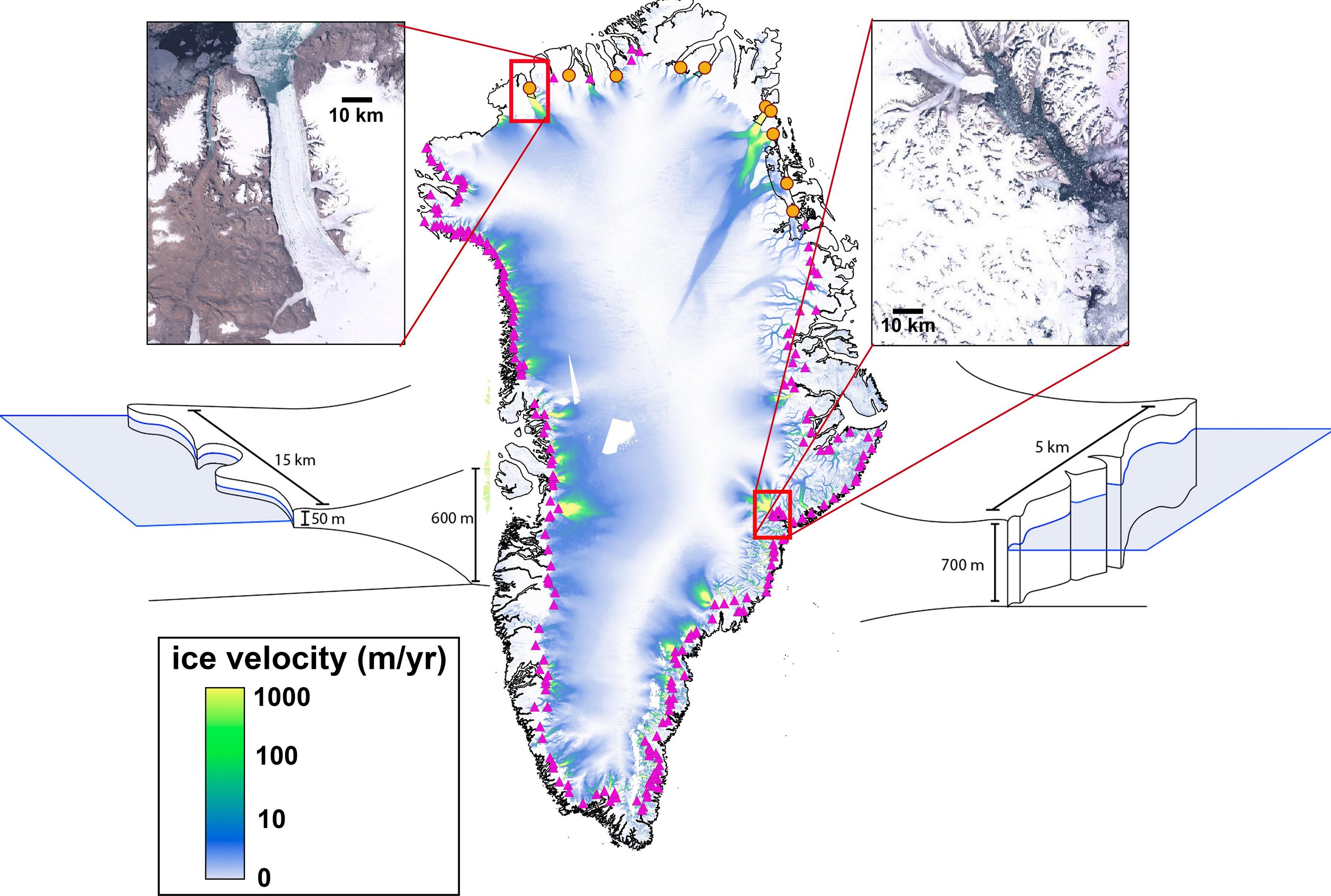The Case for a Sustained Greenland Ice Sheet-Ocean Observing System (GrIOOS)
New publication by Fiammetta Straneo, David A. Sutherland, Leigh Stearns, Ginny Catania, Patrick Heimbach, Twila Moon, Mattias R. Cape, Kristin L. Laidre, Dave Barber, Søren Rysgaard, Ruth Mottram, Steffen Olsen, Mark J. Hopwood and Lorenz Meire.

Abstract:
Rapid mass loss from the Greenland Ice Sheet (GrIS) is affecting sea level and, through increased freshwater and sediment discharge, ocean circulation, sea-ice, biogeochemistry, and marine ecosystems around Greenland. Key to interpreting ongoing and projecting future ice loss, and its impact on the ocean, is understanding exchanges of heat, freshwater, and nutrients that occur at the GrIS marine margins. Processes governing these exchanges are not well understood because of limited observations from the regions where glaciers terminate into the ocean and the challenge of modeling the spatial and temporal scales involved. Thus, notwithstanding their importance, ice sheet/ocean exchanges are poorly represented or not accounted for in models used for projection studies. Widespread community consensus maintains that concurrent and long-term records of glaciological, oceanic, and atmospheric parameters at the ice sheet/ocean margins are key to addressing this knowledge gap by informing understanding, and constraining and validating models. Through a series of workshops and documents endorsed by the community-at-large, a framework for an international, collaborative, Greenland Ice sheet-Ocean Observing System (GrIOOS), that addresses the needs of society in relation to a changing GrIS, has been proposed. This system would consist of a set of ocean, glacier, and atmosphere essential variables to be collected at a number of diverse sites around Greenland for a minimum of two decades. Internationally agreed upon data protocols and data sharing policies would guarantee uniformity and availability of the information for the broader community. Its development, maintenance, and funding will require close international collaboration. Engagement of end-users, local people, and groups already active in these areas, as well as synergy with ongoing, related, or complementary networks will be key to its success and effectiveness.
Front. Mar. Sci., 29 March 2019 | https://doi.org/10.3389/fmars.2019.00138
